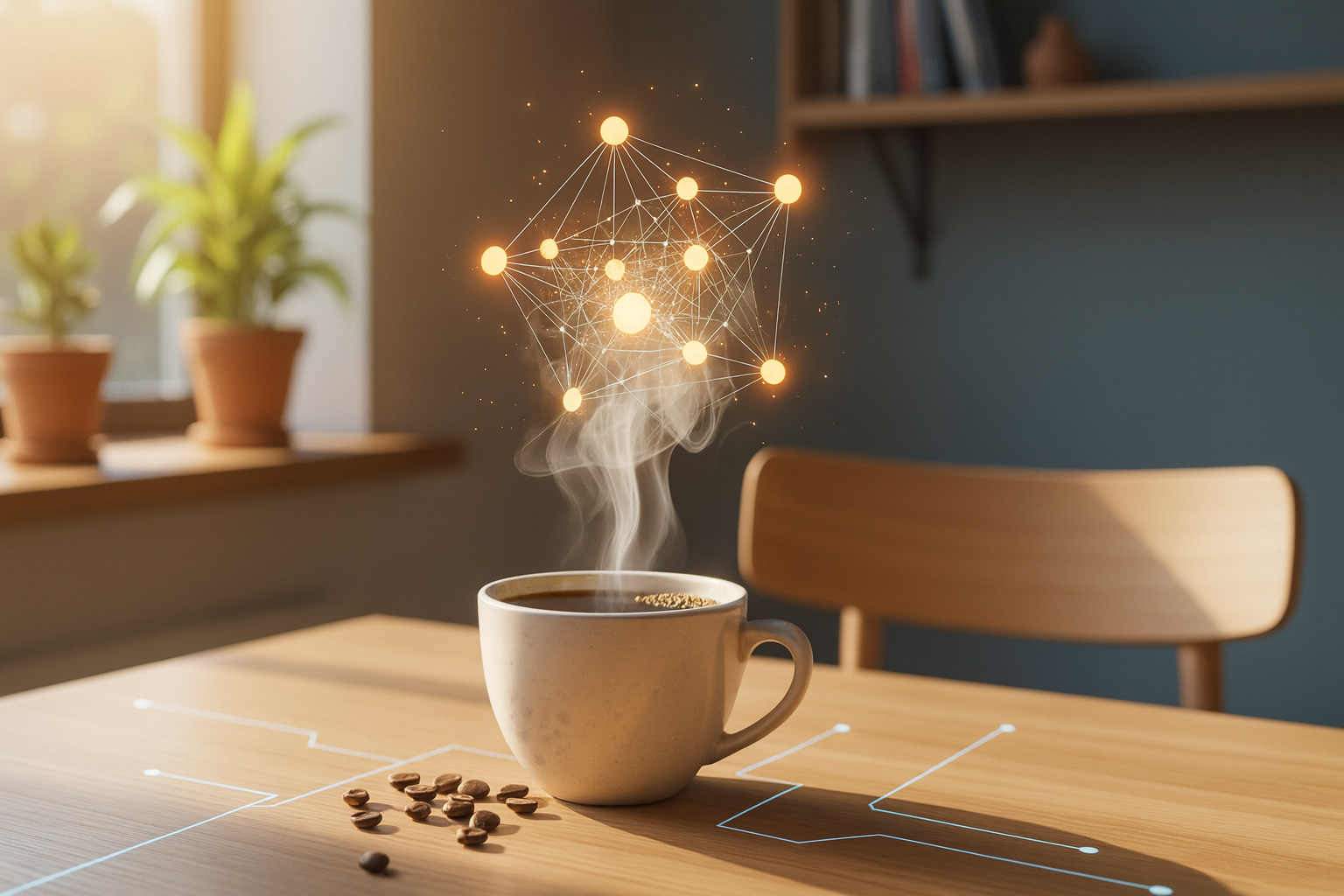
How AI Models Actually Work (Without the Math or Headache)
Someone asked me last week how AI models actually work, and I watched their eyes glaze over as another person launched into derivatives and matrix multiplication.
Here's the thing: you don't need a math degree to understand what's happening inside AI.
You just need a good analogy and someone willing to explain it like you're both sitting at a coffee shop.
What Even Is a Model?
An AI model is basically a really sophisticated pattern recognition system. That's it. No magic, no actual "thinking," just patterns.
Think of it like this: if you've ever learned to recognize when your coffee is perfectly brewed just by looking at it, you've built a mental model. Dark enough? Check. Rich crema on top? Check. That specific smell? Check. You're running a pattern match against thousands of cups you've seen before.
AI models do the same thing, just with way more patterns and way more data points.
The Coffee Shop Training Program
Here's where the coffee analogy really helps. Imagine you're training a new barista who's never tasted coffee before. Weird scenario, but stay with me.
You can't just tell them "make good coffee." Instead, you'd show them thousands of examples. This cup? Customers loved it. This one? Too bitter. This one? Perfect.
After seeing enough examples, they start recognizing patterns. Water temperature matters. Grind size matters. Timing matters. They've never tasted the coffee themselves, but they can predict what customers will like.
That's exactly what training an AI model looks like. You feed it thousands or millions of examples, each labeled with the "right answer." The model adjusts its internal settings (we call these parameters, but think of them as coffee-making rules) until it gets really good at predicting the right answer.
What's Actually Happening Inside
Okay, here's where it gets interesting without getting mathematical.
An AI model is essentially a massive network of interconnected decision points. Each decision point looks at specific features of your input and makes tiny judgments.
Imagine a coffee quality control system with a thousand inspectors, each responsible for one tiny detail. One person only checks temperature. Another only checks color. Another only checks foam consistency. They all pass their observations forward, and eventually, all these tiny observations combine into one final decision: good coffee or bad coffee.
These decision points are called neurons (inspired by brain cells), and they're organized in layers. Information flows through these layers, getting refined at each step. First layer might detect basic features. Middle layers combine those into more complex patterns. Final layers make the ultimate decision.
The "learning" part happens when the model makes predictions and gets feedback. Got it wrong? Adjust all those tiny decision points slightly. Got it right? Reinforce what you did. Do this millions of times, and you've got a trained model.
What You're Actually Doing When You Use AI
Every time you interact with ChatGPT or any AI tool, you're essentially asking the model: "Based on all the patterns you've learned, what comes next?"
You type a prompt. The model breaks it down into patterns it recognizes. It runs those patterns through its billions of decision points. It calculates what output is most likely to be correct based on its training.
No consciousness. No understanding. Just very, very sophisticated pattern matching.
Think of it like autocomplete on steroids. Your phone suggests the next word based on patterns it's seen. AI models suggest the next word, sentence, paragraph, or image based on vastly more patterns from vastly more data.
Why This Matters for You
Understanding this pattern-matching reality changes how you should use AI.
First, you realize AI works best for tasks where patterns exist in its training data. Writing email responses? Tons of examples exist. Predicting next month's lottery numbers? No learnable pattern exists.
Second, you understand why specific prompts matter. You're helping the model recognize which patterns to apply. "Write an email" is vague. "Write a professional follow-up email thanking someone for their time" activates much more specific patterns.
Third, you know why AI makes mistakes. It's not broken when it hallucinates facts or gives weird answers. It's just matching patterns it's seen, even when those patterns shouldn't apply.
The Bottom Line
AI models aren't thinking. They're not intelligent in the way humans are. They're incredibly sophisticated pattern recognition systems trained on massive amounts of data.
They work by breaking down inputs, running them through layers of decision points, and outputting whatever pattern seems most likely based on their training. Like a barista who's made a million cups and can predict what you'll love without ever tasting coffee themselves.
Once you understand this, AI becomes less mysterious and more practical. You know what to expect, what to trust, and how to get better results.
Next time someone tries to explain AI with calculus, just smile and think about coffee. You already get it.
What You Can Do Right Now
Next time you use an AI tool, pause and think about the patterns you're asking it to recognize. Are you giving it enough context? Are you asking for something that would have clear patterns in its training data?
This simple shift in thinking will improve your results immediately.
See you next week. Bring your coffee and your curiosity.